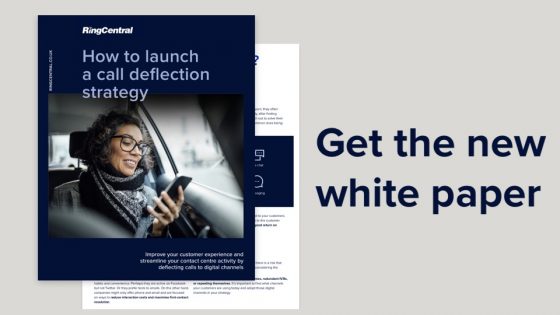IMImobile’s new white paper looks at how digital messaging channels enable proactive and reactive call deflection to reduce call volumes and improve customer satisfaction.
For any customer, “we are experiencing a higher than normal call volume” is a phrase that causes frustration. It tells them they face a lengthy wait to have their questions answered and that the value they place on immediacy when it comes to customer service is not reflected by the business they are trying to contact.
While dealing with high volumes of inbound calls at peaks times has always been a challenge, the COVID-19 pandemic has accelerated the scale of the problem for most businesses. This has been caused by a sharp rise in customer enquiries, staff shortages and a rapid shift to remote working. Businesses that previously managed voice-based contact well, now find themselves struggling, while those that had trouble before are now being crushed under the weight of calls they must answer, risking alienating their customers for life.
For most businesses, it isn’t simply a case of just hiring more contact centre staff, as they are already allocating large budgets to these operations. They have also invested in digital solutions to reduce the role of telephony and provide answers via the likes of FAQ pages and web-based self-service portals. However, despite their efforts, research by Gartner shows that they have failed to have a significant impact on the number of customer calls they must answer.
How can they remedy the situation to reduce call volumes and increase customer satisfaction?
Digital messaging – the new centre of customer help
WhatsApp and other messaging channels have seen an immense rise in usage across the globe during the lockdown. With their use at an all-time high and predicted to continue to grow, we have seen major players like Apple and Facebook establish themselves as platforms for messaging-based B2C interaction by launching new channels such as Apple Business Chat and WhatsApp Business.
Businesses are now increasingly switching their attention to these channels in order to automate enquiries through FAQ chatbots, proactively share information, organise a call-back, and enable agent chat. Messages can be uniquely laid out, include carousels and other rich media, and use multiple call-to-actions to guide users through the interaction.
These digital messaging channels are more cost-efficient than voice, enable agents to handle multiple enquiries at once and allow consumers to contact businesses in the same way they would communicate with their friends and family, at their own convenience. The use of digital messaging channels as a platform for self-service and agent interaction is an opportunity for businesses to reduce inbound call volume, provide answers quickly and increase customer satisfaction.
The role of proactive and reactive call deflection
Businesses can take a two-pronged strategy for deflecting and guiding customers to use digital messaging channels for customer service.
The first is reactive call deflection, which is about presenting a choice to the consumer at key customer service touchpoints. For example, when a customer calls the contact centre, their reason for calling is qualified through an IVR (Interactive Voice Response). When matched to certain types of enquiries, they are offered the chance to transfer to an alternative channel. If they say yes, they seamlessly move from the call to a digital messaging channel of their choice. From there, a chatbot can help them to resolve their enquiry or they can start chatting to an agent.
The second is proactive call deflection, which is about pre-empting customer queries and addressing them to remove the need to contact. Businesses can automate customer journeys that reach out to customers through digital messaging channels to communicate issues, provide service updates and offer follow-up actions to solve calls before they happen.
These can cover a wide range of use cases across the customer journey for every type of business. For example, airlines can send out disruption updates with options to book another flight, search for a hotel, or redeem compensation. Delivery companies can provide real-time updates about when a package is expected to be delivered, enabling customers to confirm they will be in, a “safe” drop off point, or that they will collect the parcel from a local shop. There are hundreds of different use cases where proactive engagement with customers can be combined with automated resolution to prevent calls into the contact centre.
Call Deflection: Tactics for Success white paper
To learn more about proactive and reaction call deflection, and how it can help to reduce call volume and improve the customer service experience, read IMImobile’s latest white paper.
It outlines how contact centres are able to deflect inbound calls and proactively communicate through messaging channels like WhatsApp Business, RCS and Apple Business Chat. These are the new generation of two-way messaging channels that enable customers to find the answers they need without calling the contact centre.
You can download a copy here.







Leave a Reply